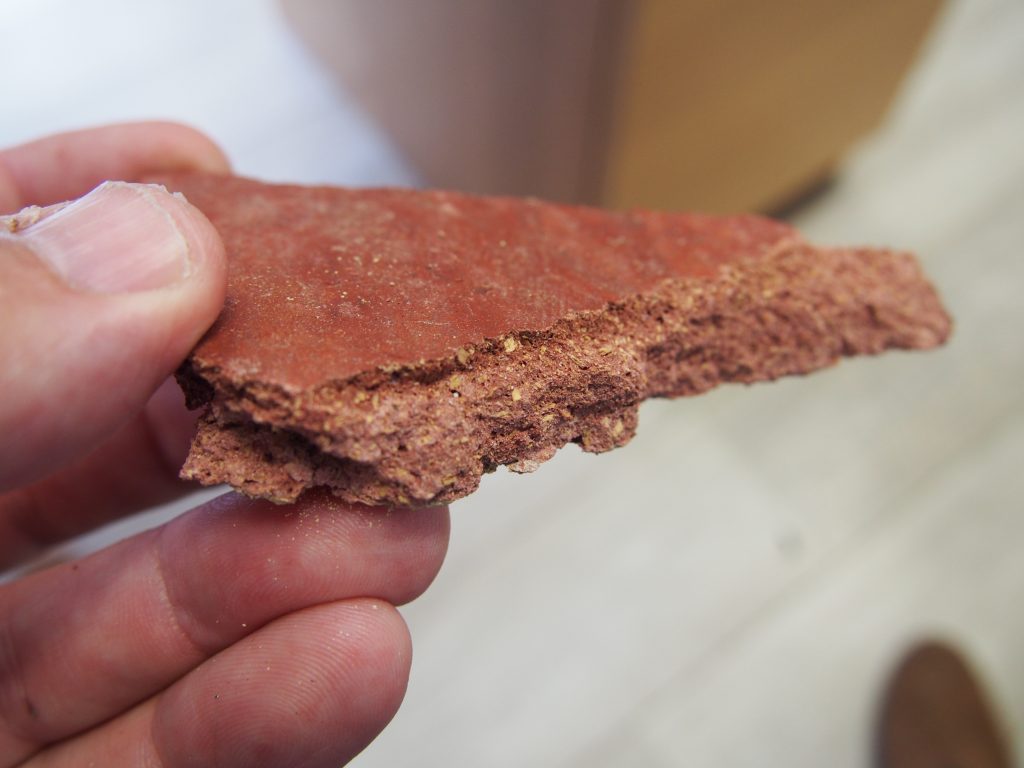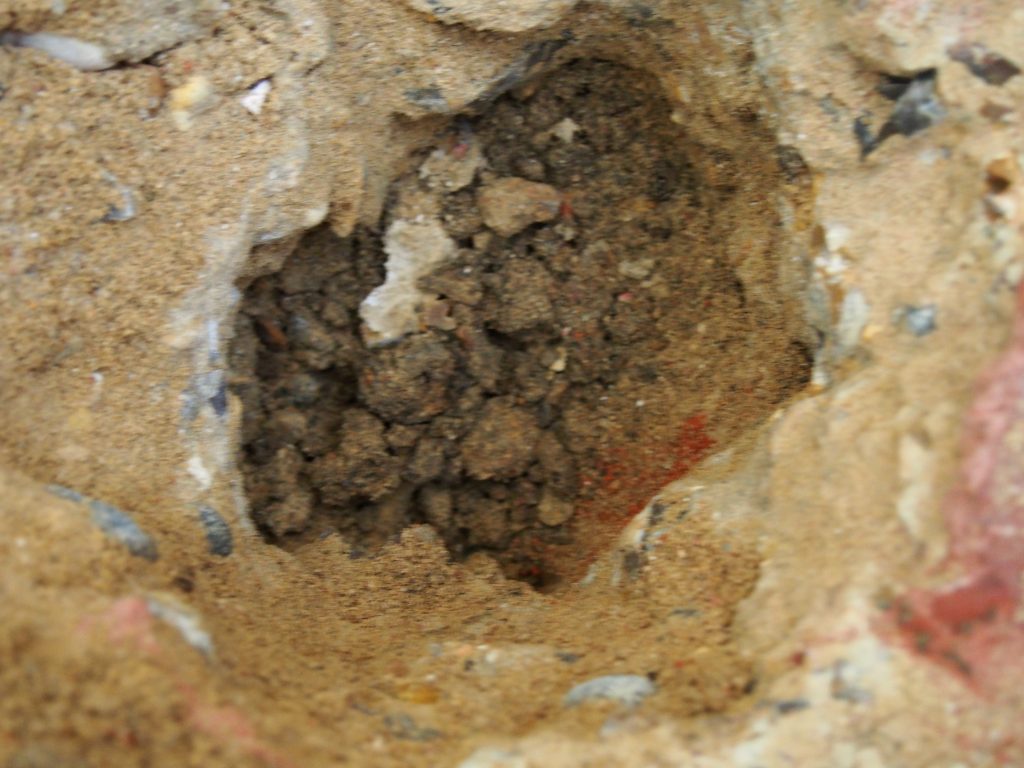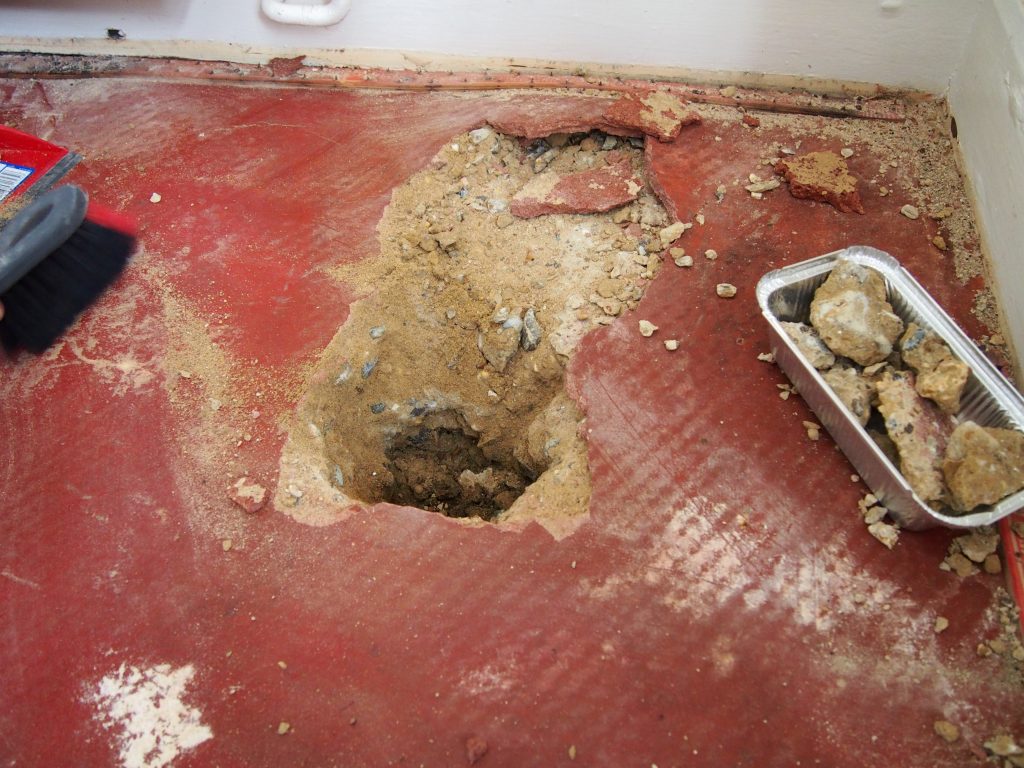
I’ve recently just completed a long Roadshow for the RICS, ironically, I was giving a talk on solid floor defects, and included a section on Magnesite floor failure, as a refresher. In the last talk I gave, I asked an audience of about 70 Chartered surveyors, how many had seen a magnesite floor recently; the answer was none. I myself have not seen for for quite a few years but only a week later, I attended a property in London to investigate an alleged problem with sulphate attack, and guess what I found?…
What is Magnesite Flooring?
Magnesite, or Magnesium Oxychloride, was a product widely used by the flooring industry between circa 1920 and 1960. It was especially used in industrial premises, as it was resistant to oil spillages; however, it was frequently used in residential premises.
It is a water based product, commonly reddish pink in colour, though can be pale yellow, or any other colour specified.

Magnesite flooring was made from a mixture of calcined magnesite and magnesium chloride solution with various fillers (e.g. wood flour, sawdust, asbestos).• It was typically laid between 10 and 25mm thick, but two coat applications could be up to 50mm thick.
What’s wrong with Magnesite?
Firstly, Magnesite contains chlorides, so if there is any embedded steel reinforcement within the floor slab, then the concrete can be affected by Chloride attack, which will corrode the embedded steel. Corrosion is an expansive reaction, and cracking of the concrete is likely to occur, as the steel corrodes. You should also consider, that steel water pipes may be buried in the concrete, and these are equally at risk.
Many old concrete floors, do not have a damp proof membrane installed, DPM’s came into common use in the mid 60’s, but prior to this, many concrete floors had a waterproof oversite, a layer of bitumen was commonly used. It would be wrong to assume that Magnesite provides that same protection against damp, and in fact they are very vulnerable to dampness. Magnesite is water soluble, and will return to its previous state if exposed to enough water.
The Asbestos Risk
As discussed earlier, Magnesite can contain asbestos fibres, as a filler. Commonly, the way to deal with asbestos, once identified, is to remove it, using a licensed contractor, or to encapsulate it. However, you can’t encapsulate a Magnesite floor, as they are so vulnerable to deterioration when exposed to water. Obviously, if you tried to encapsulate by pouring a screed over the top, then you’d be introducing large amounts of construction moisture into the Magnesite. The underlying Magnesite, would then most likely turn to a Weetabix type consistency, and start to break up, leaving you with no suitable substrate support below the screed.
Magnesite Floor Case Study
In this particular property, a Chartered surveyor had recently attended, for a pre-purchase survey and noted heave, or an uneven concrete floor below the carpets; he then of course raised the alarm for a potential risk of sulphate attack.
I attended to sample the floor, but on pulling up the carpet, the cause of this uneven floor, was clearly Magnesite floor failure; the Magnesite having got saturated, subsequently expanding and causing large blisters in the floor.
It was still important to investigate the situation with the underlying concrete and I excavated a hole through the slab to sample both the concrete, and the underlying hardcore. However, on breaking through the 8″ thick concrete slab, we found that there was no hardcore, and the slab sat directly on wet clay, with no DPM installed. This of course means that the concrete is in direct contact with ground sulphates.

The concrete was also notably wet, and this moisture had transferred to the Magnesite, causing it to heave up, blister, and crumble. From the image below, you can see how the magnesite had delaminated from the concrete substrate, forming large blisters, which crumbled when you stepped on them.

We did take samples of the concrete for sulphate tests, but with a saturated slab and widespread failure of the Magnesite, my advice was to renew all the solid floors, with the only test required being for asbestos. Testing the magnesite for asbestos, was critical before any works to remove the flooring could proceed.
One final note worth mentioning for any surveyors looking to check for dampness in Magnesite. Magnesite is electrically conductive, so if using a hand held electronic moisture meter, it will always give a high reading for damp.

Leave a Reply